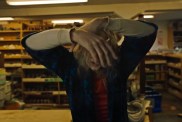Today’s two films are a pair of films from my Essential Art House: 50 Years of Janus Films collection from Criterion, which I bought way back at the end of 2008 when Criterion was having a huge sale. Looking over the list of 50 films I still have 21 to watch that I have not yet seen, which is actually one of the reasons I love owning it so much. There’s always something new to watch.
Unfortunately, this week I brought these two films on a little vacation from the home office so I don’t have the 240-page book that accompanies the set on hand so I can’t read the brief essays for these two films. Something to look forward to I guess. Nevertheless, no more babbling… to the movies…
| Floating Weeds (1959) |

| Fires on the Plain (1959) |

There you have it. Now share your weekly recaps and weigh in with any thoughts you may have on the films I saw. And remember to connect with my Netflix queue by clicking here, I have already added several titles from those that have already linked up.










